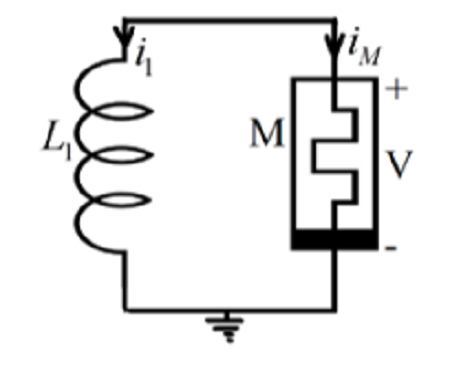


Indian Journal of Science and Technology
Year: 2021, Volume: 14, Issue: 27, Pages: 2257-2271
Original Article
Njimboh Henry Alombah1*, Achille Ecladore Tchahou Tchendjeu2, Kengne Romanic3, François Calvin Talla3, Hillaire Bertrand Fotsin3
1Department of Electrical and Electronics Engineering, College of Technology, University of Bamenda, P.O. Box 39, Bambili, Cameroon
2Department of Computer Engineering, National Higher Polytechnic Institute, University of
Bamenda, P.O. Box 39, Bambili, Cameroon
3Unit of Condensed Matter Research, Electronics and Signal Processing, LAMACET, Faculty of
Science, Department of Physics, University of Dschang, P.O. Box 67, Dschang, Cameroon
*Corresponding Author
Email: [email protected]
Received Date:01 April 2021, Accepted Date:14 July 2021, Published Date:04 August 2021
Objectives: To propose a second-order locally- active memristor, a twocomponent chaotic circuit resulting from this current-controlled generic memristor and an application in steganography. Methods/statistical analysis: Using a one-state-variable first-order memristor, a model is proposed which is obtained by modifying a locally-active memristor based on a current-controlled generic memristor. The model has two internal state variables: a voltage stored up in a capacitor and a current stored up in an inductor. With an external inductor, 3D-two-component chaotic circuit is developed. Numerical studies are made using MATLAB and confirmed by a field programmable gate array (FPGA) based hardware implementation. Findings: A two-state-variable based second-order memristor model is presented. The novel memristor configuration leads to the design of a simple two-component chaotic circuit. By investigating the characteristics of the memristor, it is shown that the memristor can be switched from a predominantly passive region to an active region with a wide locally-active region. An application in steganography helps to hide a secrete message inside an image. Application/improvements: The results obtained in this investigation will enrich the literature of memristive circuits, enhance the simplification of chaotic circuits and can be used to improve the memristive circuit based applications in many research domains such as secure information in telecommunications, Random Number Generation (RNG) and image encryption.
Keywords: Memristor; Two component circuit; Chaos; Local activity; FPGA; Steganography
© 2021 Alombah et al. This is an open-access article distributed under the terms of the Creative Commons Attribution License, which permits unrestricted use, distribution, and reproduction in any medium, provided the original author and source are credited. Published By Indian Society for Education and Environment (iSee)
Subscribe now for latest articles and news.